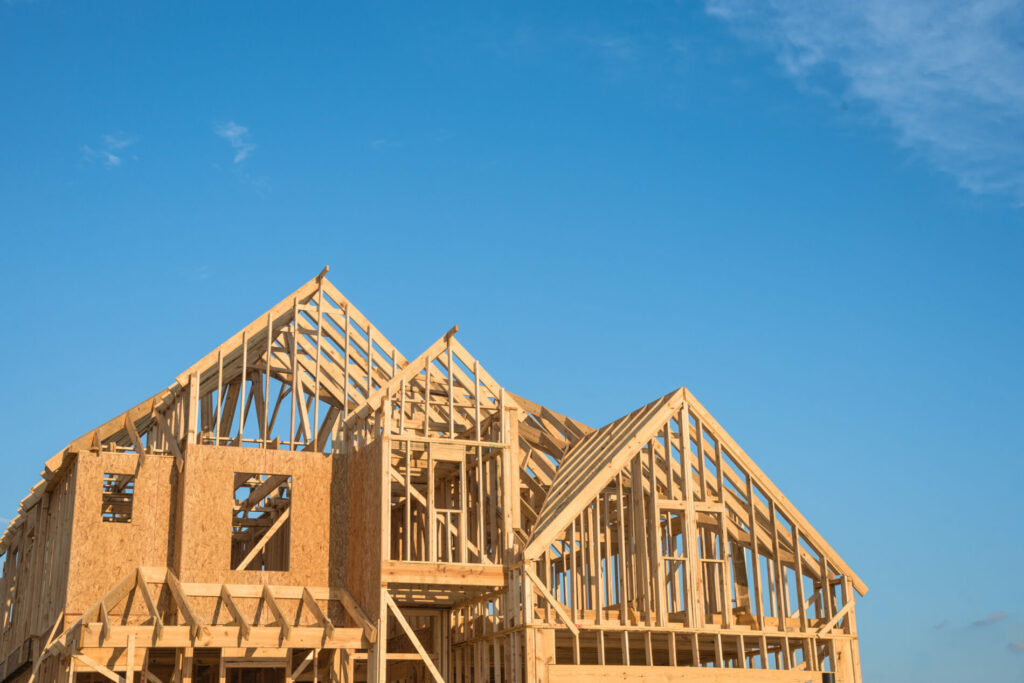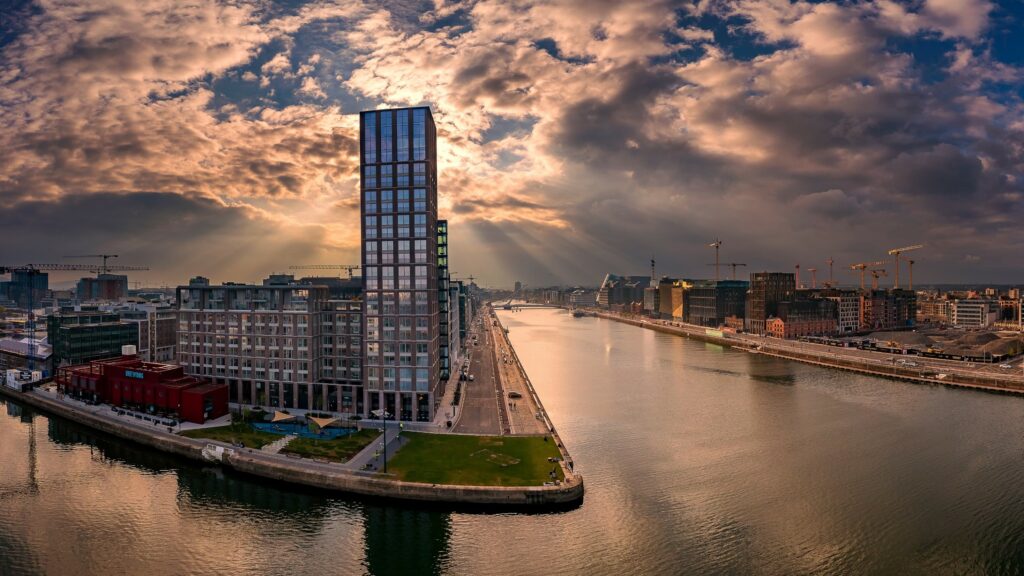
Irish Institutional Property (IIP) is the voice of institutionally financed investors with significant international backing in the Irish real estate market. IIP’s twenty members, financed in the main by pension funds are helping build vibrant communities and supporting the Irish real estate market to meet the needs of a dynamic fast-growing population and economy. In the decade or more since IIP’s establishment, members have invested c€20bn in Irish real estate and new homes for sale or rent in particular. IIP established their ESG Working Group in 2023 to support members to build their own ESG knowledge and capacity.

Neil Menzies works for Hibernia Real Estate Group in Ireland and is also chair of the ESG working group within IIP. Neil is Director of Sustainability at Hibernia, with responsibility for managing the Group’s ESG efforts across its c.€1bn property portfolio, all of which is in Dublin. This includes ownership of Hibernia’s climate change resilience planning and overseeing the implementation of the company’s sustainability strategy. Neil manages Hibernia’s environmental, social and governance reporting, ensuring it is benchmarked against globally recognised ESG standards. He also develops all ESG-related communications and manages related stakeholder engagement in addition to researching and planning for future ESG trends and regulations.
Hibernia Real Estate Group is an office-led Irish property company with a high-quality portfolio of office and residential assets, predominantly located in prime central Dublin locations and currently worth c.€1bn. In 2022, Hibernia was acquired by Brookfield, a leading global alternative asset manager. Sustainability is at the heart of Hibernia’s work, with the Group’s developments demonstrating best practice in both the renovation of older buildings and the construction of best-in-class office developments.
How do you picture the sustainability landscape for real estate in your country? What aspects of ESG dynamics are currently the best integrated? Conversely, which aspects remain the least integrated?
On the regulatory side, Ireland is still evolving when it comes to collaborative placemaking and master planning for social benefit between local authorities and developers/investors, especially in comparison to some western European and Scandinavian countries.
The country is also somewhat behind when it comes to setting emissions targets across the built environment sector. While there has been good adoption of the Energy Performance of Buildings Directive (EPBD) in Ireland since 2008, there has been little focus to date on what the 2024 EPBD recast directive requires when it comes to whole life carbon emissions, and other new areas, prior to the directive needing to be transposed into national laws by May 2026.
Good progress, however, is now being made with multiple industry and research bodies, such as the Irish Green building Council, the Sustainable Energy Association of Ireland, the Royal Institute of the Architects of Ireland, and Construct Innovate, providing best practice guidance on whole life carbon measurement and its integration into the design process.
Similar to the rest of Europe, investors are looking to invest in Irish real estate with best-in-class ESG credentials, especially those with international certifications such as LEED or BREEAM certified commercial real estate assets.
The strong presence of US tech firms in Ireland over the last 20 years and the establishment of EMEA headquarters in the country, has helped to drive the adoption of LEED above BREEAM certification, and LEED Platinum or Gold is nearly an expected minimum level when taking office space in Dublin.
In the residential sector, the Home Performance Index (HPI) and the PassivHaus standard are becoming more commonplace.
In terms of industry collaboration, the Irish Green Building Council (IGBC) has a strong membership in Ireland and is a very proactive force in shaping legislation and policy around green buildings. It has been instrumental in accelerating developments on whole life carbon emissions in the built environment and other issues such as circularity, the creation of HPI, a retrofit-first approach and the increased focus on protecting and promoting biodiversity.
The impact of climate change is not currently seen as a high risk within the Irish real estate sector, so it would be an improvement if this changed and the matter was addressed with greater urgency.
It is clear at this point that Ireland is facing significant climate-related infrastructural pressures such as the availability of water, renewable power and public transport, which in turn impacts the viability of all aspects of real estate development.
When it comes to energy, the country needs to accelerate the rollout of renewable power on the electricity grid to allow the real estate sector to avail of renewables for developments and to transition away from fossil fuels towards net zero carbon, which is a key priority of the EPBD.
What are the key regulatory deadlines or development in 2025-2026 that you are monitoring in relation to sustainable real estate in your country?
The most prominent piece of legislation that IIP is monitoring during 2025 is the EPBD recast. The challenge here is to educate members on the impact of EPBD. They especially need to understand what is and will be required in terms of improving older assets, calculating the potential risks involved in global warming, increasing renewable electricity usage and transitioning away from fossil fuel usage. They need to know when each of the requirements will come into force over the coming years so that they can make the necessary improvements to their portfolios to avoid the potential stranding of their assets.
What are the key voluntary deadlines or development in 2025-2026that you are monitoring in relation to sustainable real estate in your country?
IIP is assisting the IGBC to explore the implementation of a regulatory sandbox framework to address bottlenecks related to the greening of the construction sector in Ireland. A regulatory sandbox is a general framework that innovators can apply to test their innovative products, services, and methodologies for a certain period in a controlled environment. It may imply a derogation from standard regulations, subject to conditions imposed by the regulator. This supports innovation while promoting regulatory learning. Under this project, a concept of a regulatory sandbox that can be tested in Ireland’s construction industry will be fully developed, as well as a list of other areas that could best be addressed through this instrument

To learn more about the sandbox framework, see https://www.igbc.ie/building-a-zero-carbon-irelandold/regulatory-sandbox/.
Could you outline the main elements of your events and publications calendar for the year to come?
The IIP ESG Working Group meets every 2 months with members contributing updates on their organisations’ ESG work and concerns. The Group completed a piece of research with EY Ireland in 2024 called The ESG Timeline for Real Estate in Ireland and we now use this to help guide membership activities. Topics covered include energy retrofits, EU Taxonomy, biodiversity, embodied carbon, and best practice case studies around these topics. Visits to best-in-class sustainable buildings and development projects are included in the calendar so members can see, first-hand, what is happening in the sector. Further input from experts is then secured to build awareness on certain key topics.

The Irish Institutional Property (IIP) worked with EY in compiling a report entitled ‘The ESG Timeline for Real Estate in Ireland’. This is a clear, easily digestible account of the decarbonisation roadmap and implications for the Irish real estate sector that can support practical strategic engagement by the industry and its representatives.
The publication covers salient topics such as decarbonisation, and the economic transformation implications as well as the opportunities and risks for those in the sector.
In 2025, IIP is concentrating on building awareness around the EPBD recast, as this is a key regulation. One of our main objectives is to build relationships with IGBC to ensure IIP members’ voices are heard on key topics such as the adoption of timber in construction in Ireland and moving the industry towards greater transparency in operational building energy use performance.
Finally, in your opinion, what are the key trends likely to shape the real estate sector in the coming years?
The current demand from investors for assets with best-in-class ESG credentials, which allow them to build greener funds and portfolios, will likely continue. The demand for the same assets will keep growing on the occupiers’ side, as it assists them in hiring and retaining the best employees and reducing their carbon footprints.
A stronger demand for assets that meet the requirements of EU Taxonomy could also occur while it is likely there will be more of a focus on the operational performance of assets to better understand their potential stranding dates and the associated CAPEX plans needed to drive energy efficiency. This will involve increased visibility of data, with technology such as smart buildings and smart meters, helping to guide owners on energy efficient interventions.
There is a need to increase the availability of green lending from pillar banks to allow homeowners to buy more sustainable homes.
On the insurance side, industry is now gearing up to increase premiums to protect against losses related to climate change such as flooding or storm damage. The Central Bank of Ireland has issued Guidance for (Re)Insurance Undertakings on Climate Change Risk to clarify its core expectations of how (re)insurers should consider climate change risk within their business. This will have a material impact on the real estate industry.
Industry voices will continue to focus on Ireland’s need to adopt a policy on the use of timber in construction, given that it will help the country to meet its embodied carbon targets. This topic will also require considerable scaling up of the timber industry in the country to meet demand.
On other topics, the need to reduce water demand will become more evident as climate change increases the probability of drought periods and puts additional demand on an already challenged water supply infrastructure in Ireland.
On biodiversity issues, nature loss in the country is higher than in most other countries. This must be reversed, and the real estate industry will have to adopt measures that improve biodiversity either onsite or offsite to address this issue.



